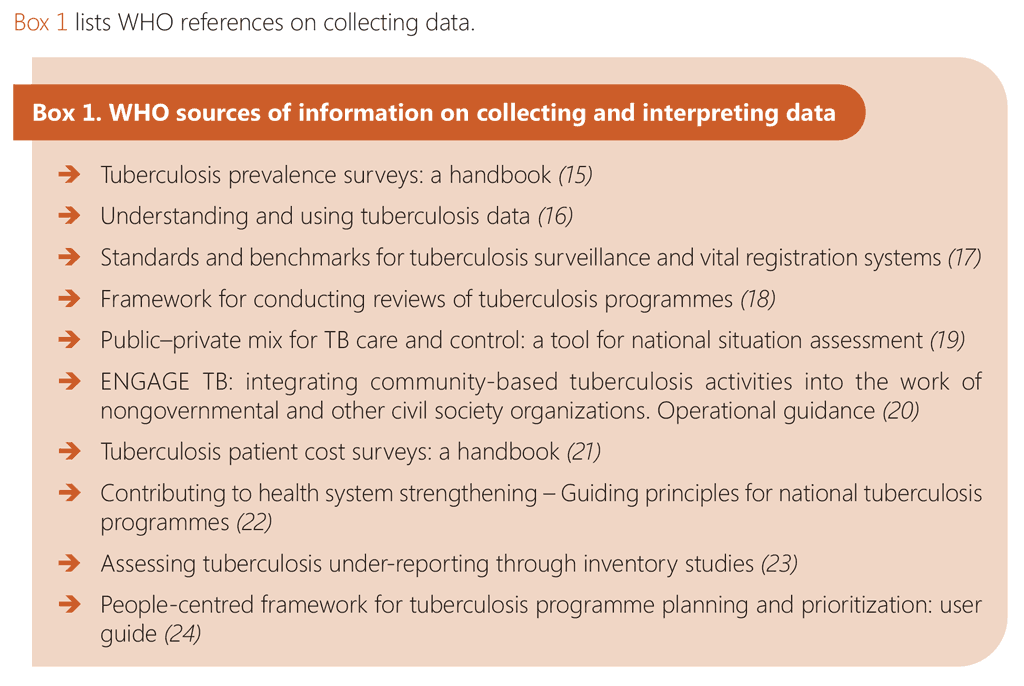Book traversal links for 2.2.3 Epidemiology of TB
The main purpose of an epidemiological assessment is to identify gaps in TB case detection and opportunities for addressing those gaps through screening. The assessment should account for potential benefits, risks and costs of systematic screening, particularly in relation to other possible interventions. The analysis should be disaggregated by age, sex and geographical location, and special attention should be paid to vulnerable groups that are at high risk for exposure and/or progression to TB disease or are likely to face barriers to accessing TB services, or both. Systematic TB screening is recommended in geographical areas with an estimated TB prevalence of 0.5% or more. Such areas may be informal peri-urban settlements and slum areas, where entire neighbourhoods could harbour a large burden of TB. Epidemiological techniques like geographical information systems could be used to plot “hotspots” for targeted action.
Potential data sources include:
- surveillance data (including laboratory data);
- location of all TB diagnosis and treatment facilities, including in the public and the private sector;
- data from TB prevalence and HIV incidence surveys;
- evaluations of previous or continuing activities to improve case-finding, including screening;
- national health and demographic statistics (including vital statistics and programmatic data); and
- the findings of research.

 Feedback
Feedback